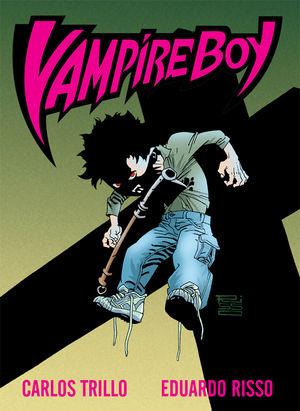| Quote: |
| “You kids’re talkin’ about robbing a bank!” |
“No, we’re talkin’ about goin’ to get a dead guy’s money.”

This book collects the four issue mini-series that was the first collaboration between writer Brian Azzarello and artist Eduardo Risso. This was the start of a successful partnership that has since produced 100 Bullets, the current Spaceman and some Batman stories.
Jonny Double is an ex-cop turned private investigator whose latest client has just turned up dead. The down on his luck Jonny is then hired by a mysterious Mr. Hart to find out what crowd his daughter, Faith, is running with and to keep her out of trouble. Everything seems fine until he is persuaded to impersonate the son of Al Brown (AKA Al Capone) to close out his daddy’s inactive bank account. However, the account is not as inactive as the Faith’s crew think and instead of scoring $300,000 they lift $7 million. Jonny’s world goes downhill fast as the kids start turning up dead and Jonny has to protect Faith from a legendary hit man.
This is an excellent book from Azzarello and Risso. A modern day noir crime caper with all the elements one might expect including a dumb PI falling for deadly femme fatale. Some of the parts of the story might be a bit too clichéd but the quality of the writing and art is such that you drawn along into the twisted narrative completely. There are enough red herrings to keep you guessing throughout the story and the ending neatly wraps up all the threads from Jonny’s past and present. The only thing that slightly jarred for me was Jonny’s speech patterns which were infused with 60s beatnik/hipster figures of speech. But otherwise this fabulous book should appeal to fans of 100 Bullets if they haven’t read it already.



